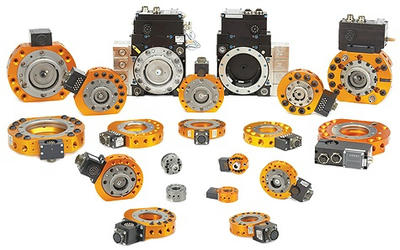How does an automatic robot tool changer work?

How does an automatic robot tool changer work?
It will have one gripper on each of the two sides. Each gripper can rotate 90°, to deliver tools to the front face of the turret. One will pick up the old tool from the turret and the other will pick up the new tool from the magazine.
What tools do robots use?
Mechanical Tool
Small vise: you'll need not need this.
Hammer: A hammer is one of the standard tools you'll need.
Screwdrivers & Wrenches: their uses are obvious
Saw: Metal and wood saws
Square, measuring tape, scribe and other marking out tools.
Vernier calipers: Allow very accurate marking out and measurement.
How does a CNC automatic tool changer work?
Currently available on our full-size PRSalpha Gantry tools, an Automatic Tool Changer (ATC) reduces production time by automatically changing cutters between tool paths, thus eliminating the need for the CNC operator to change and zero tools individually.
What is an ATC in machining?
An auto tool changer often referred to as an ATC, is used to improve both the production and the tool carrying capacity of a computerised numerical control or CNC machine tool. It does this by allowing the machine to work with various different tools.
What is ATC robotic tool?
A robotic tool Changer is also known as a Quick-Change device (QC), an automatic tool changer (ATC), robot tool changer, robot coupler, robotic coupler, or robotic connector. Glossary.
What are the materials needed in robotics?
Image result
Here are some of the materials to keep in mind when designing and building robots.
Steel. Steel is one of the materials used most often by robot builders
Rubber
Aluminum
Kevlar
Biodegradable 'smart' materials.
